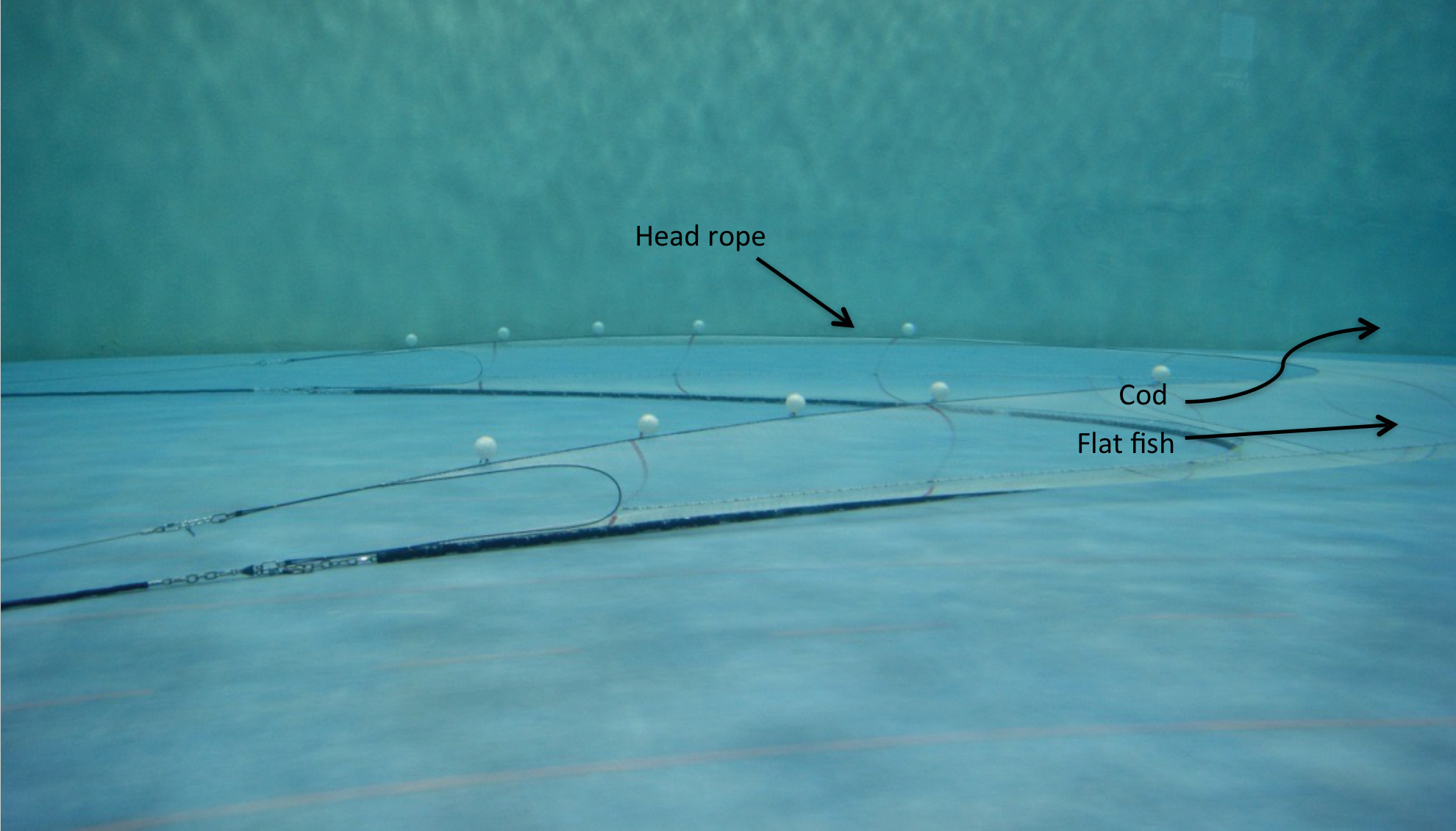 PORTLAND, ME – In the summer of 2016, a new trawl was tested in the Gulf of Maine that promises to substantially reduce the capture of cod without loss of flatfish and other valuable species close to the seabed.
PORTLAND, ME – In the summer of 2016, a new trawl was tested in the Gulf of Maine that promises to substantially reduce the capture of cod without loss of flatfish and other valuable species close to the seabed.
Called an Ultra-low Opening Trawl, or ULOT, this modified flatfish trawl is designed specifically to allow cod in the trawl mouth an opportunity to escape over the headrope and avoid capture.
The ULOT has a vertical opening of only 2.5’, a reduction of at least 50% compared to most traditional bottom trawls, and the headrope measures 10% longer than the sweep.
Over a period of several weeks this trawl was tested on the fishing vessel Lisa Ann III, owned and operated by Capt. Jim Ford, while fishing adjacent the Whaleback closure in the Gulf of Maine.
The development of the ULOT commenced several months earlier when an assembled team comprising of fishermen, conservation engineers, and a netmaker met to discuss ideas for a new trawl to avoid the capture of cod.
This was clearly a revolutionary approach, given that until recently there was a long history of trawl fishing to target cod in the Gulf of Maine.
Building on many decades of fishing experience, complimented by video observations and studies of cod behavior near the mouth of a trawl, the assembled team considered several prototype cod-avoiding trawl designs over a period of several months.
The ULOT design was ultimately selected by consensus by the team based on perceived simplicity, practicality, and likelihood of immediate adoption by fishermen should it prove successful.
Scale model testing
The ULOT was then modeled using computer software by staff at the Fisheries and Marine Institute of Memorial University, Newfoundland.
This modeling produced three-dimensional images of the trawl under a variety of rigging and operating conditions, such as warp-to-depth ratio, door spread, and towing speed, and useful outputs such as headrope height, trawl drag, and wingend spread for each simulated condition.
The outcomes of this modelling suggested the ULOT was capable…
 To get the rest of this story, you’ll need to purchase the MAY 2017 issue of Commercial Fisheries News.
To get the rest of this story, you’ll need to purchase the MAY 2017 issue of Commercial Fisheries News.
Please choose from the following options:
• BUY a Single PRINT edition of CFN that is delivered by MAIL. PRINT EDITION
• Quickly enjoy ONLINE access with our Hi-DEF flip-book. PURCHASE THIS ONLINE EDITION
• Shop the Online ARCHIVE
(Read online flip-book immediately with purchased access key and download a copy for yourself to keep. Not sure if it works for you? Try a FREE SAMPLE HERE.)
• SAVE BIG when you SUBSCRIBE!






